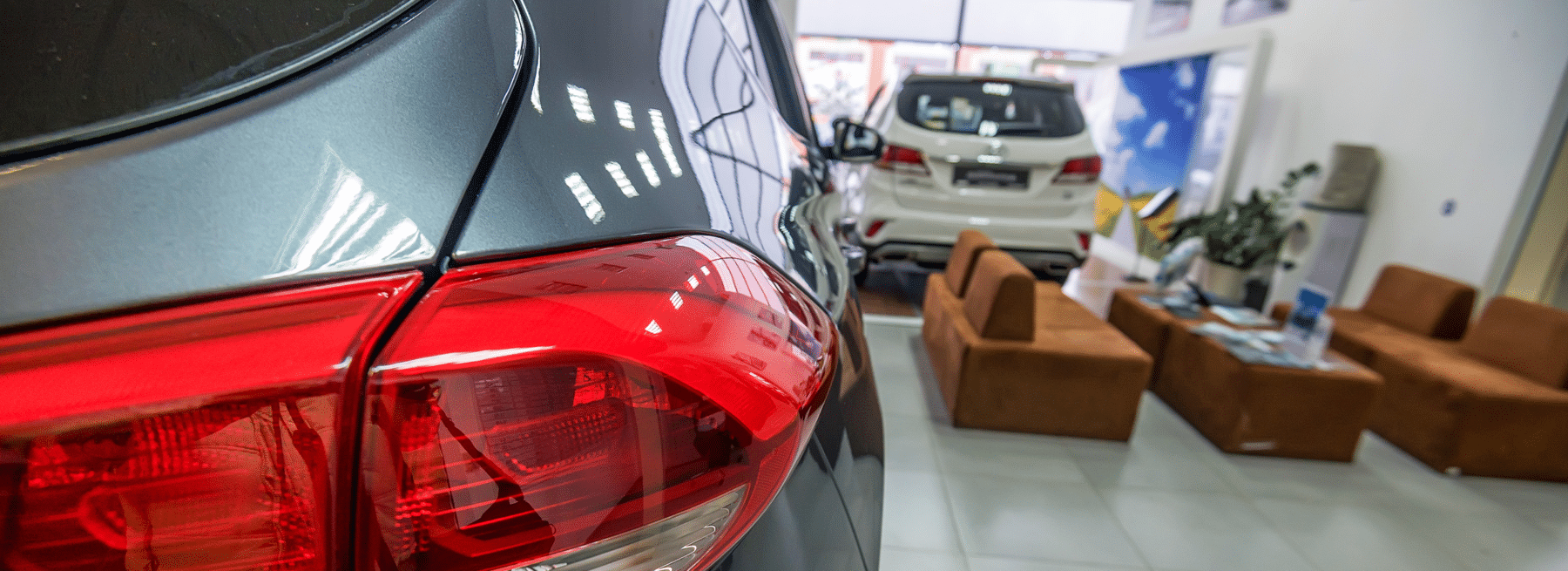Semiconductor chip shortages, rising prices of new and used vehicles, and catalytic converter thefts have sent the automotive dealership industry into a rocky period. Some may feel as though there are more uncertainties than there are certainties. Dealerships today can find themselves under a lot of pressure to upgrade their business to prepare for the growing number of electric vehicles on the roads, sell their dealerships, or perhaps merge with or acquire another dealership.
With the growing shift toward electric, it has become clear that typical way of doing things will not work for much longer. First, here’s a look at the three pressures affecting dealerships and their decision-making process.
What Are the Three Biggest Pressures on Dealerships?
The following stand out as the biggest burdens on automotive dealerships.
More people are using online resources for vehicle shopping
Many vehicle owners have shopped online for years. However, the pandemic largely increased the use of online resources during the buying process. With the shortage of inventories, customers look for their vehicles online knowing that the dealership lots in their local area may not carry what they want. Customers the majority of their research and browsing online until they’re ready to test drive the vehicle. They may even start the financing process online.
Moreover, a Progressive Insurance study finds that people who shop for vehicles online are 20% more likely to report feeling highly satisfied with their experience than in-person shoppers. Two of the biggest drivers for this difference in satisfaction are time and cost savings.
Progressive shares the story of a person who bought two cars from two different places in a short time period. The experiences between the two places were starkly different. The first one- with Carvana- was completely online, including the financing.
The dealership experience, on the other hand, required signing the paperwork in person. On top of that, they forgot one page. So, the dealership brought it to the customer’s house to sign. It required at least two trips to the dealership to complete the transaction. The customer appreciated the Carvana experience as it allowed them to avoid dealing with a salesperson.
Customers think dealerships are losing relevance
People shopping for vehicles say dealerships may not be relevant anymore. They don’t believe dealerships are prepared for the growth of electric vehicles.
Dealing with policies from the manufacturer
OEMs are pressuring dealerships to invest in the electric vehicle’s future or sell. These costs can be significant depending on the manufacturer. This tends to be a big barrier for smaller dealerships or those in smaller cities or rural locations.
For example, CNBC reports Ford Motors has asked its 3,000 dealerships to invest $1 million in upgrades to support the selling of EVs. Ford offers two programs to allow dealerships to become “EV-certified” and the price is half a million or $1.2 million, depending on the program the dealerships choose. Some dealerships simply cannot afford this.
Four Solutions for Dealerships to Overcome These Challenges
Inventory is most likely to remain a hurdle for dealerships. This will affect their ability to fill up the dealership lot. So, how can automotive dealerships overcome these three burdens without selling their dealership or acquiring others? Remember the third option? Invest in the electric vehicle’s future.
Here are four ways to counteract the pressures dealerships face. And there’s a bonus. Some of these will strengthen your customer service to help with your customer relationships.
1. Expand Services for Electric Vehicles
Like any traditional vehicle, electric vehicles need repair and maintenance. They also need tire repairs and replacements. What’s interesting is that tires for EVs have a shorter life span than traditional tires. Tire service is often the first encounter a customer may have with a dealership’s service center. It can be the gateway to more services if the dealership does a good job taking care of the customer and their vehicle.
Aside from tires, EVs don’t require as much maintenance as traditional vehicles. Nonetheless, they require services for wiper blades, brakes, and cabin air filters. They also need to be inspected every year.
2. Provide Effortless Online Financing
The report from Progressive showed the contrast between the Carvana and the dealership experience. The dealership’s financing process left a lot to be desired. If dealerships want to compete, they need to simplify and digitalize the financing process.
Websites like Carvana and others allow customers to get preapproved for financing before they start their search process. The satisfaction rate is higher at 70% because the process is perceived as easy, fast, and convenient.
3. Increase Dealership Service Lanes
Invest in dealership technology solutions. Automation helps to ensure customers have the best experiences. With this technology, the dealership service department will operate more efficiently from the time the customer drops off their vehicle to their picking it up, and can greatly enhance your customer service along with increasing customer loyalty.
Automating the service operation puts the latest information in the hands of service techs. They’ll be able to use mobile devices and tablets to quickly enter updates on the customer’s vehicles and even attach photos.
Customers will be less likely to call the dealership because the technology can automate the process of sending them updates using the customers’ preferred communication methods. This will affect customer loyalty as they avoid wasting time and frustration in contacting the dealership for updates. The staff won’t be burdened with these follow-up calls.
You may not have control over inventory, but all vehicles still need to be serviced. Consider this research from J&L Marketing, which reveals customers are 86 times more likely to buy their next vehicle from the automotive dealership that services and maintains their vehicles. Wouldn’t this be worth expanding your services business?
Does your dealership offer inspections as well as tires and wheel services? As previously mentioned, this is the best opportunity to reach out to first-time service customers. This is why it’s critical to take advantage of dealership technologies. It will automate and improve your service processes. This largely affects customer service and the likelihood of whether they use your services again.
In addition to all the challenges dealerships encounter, they may have a shortage of qualified techs. This technology lets them to do what they’re best at and avoid spending time on tasks that can be automated.
As your service techs do inspections, they may find problems that can lead to more opportunities, such as doing an alignment. These provide one of the highest margins in automotive services.
Industry pundits expect Advanced Driver Assistance Systems (ADAS) to skyrocket. They believe this market will grow by $19 billion between 2021 and 2025 with a CAGR of about 8% as indicated by Technavio Research. You might want to include ADAS parts and equipment in your dealership’s service offerings.
4. Add a Dealership Service Lane Kit
Dealerships are dealing with a lot between the pressure and inventory shortages. People will find ways to sue a company in hopes of getting easy money. One way to do this is with liability and personal injury claims. These are expensive as they involve medical bills and vehicle repairs at no cost to the customer.
The problem with these claims is that they’re very hard for dealerships to win without evidence. When the dealership reports this to their insurance company, they may see their premiums go up. That is another expense. How can dealerships overcome these hurdles?
The service lane kit from Stealth Monitoring helped one dealership evade the cost of a personal injury claim from a customer who said they slipped and fell on the dealership’s lot. A service lane kit comes with video recordings. These proved the dealership was not responsible.
In another scenario, a customer wanted to talk to the service manager. The customer asserted the dealership’s techs had dented, scratched, and damaged their vehicle while undergoing servicing. Since the dealership has a service lane kit, they called Stealth to investigate. Stealth’s video analysts reviewed the footage to piece together what really happened.
After locating the footage associated with the accusation, the analyst sent it to the dealership. The video revealed the customer’s vehicle already had the damage when they entered the dealership. As a result, the dealership protected itself from the high price of a false claim.
A service lane kit from Stealth Monitoring includes high-definition IP cameras with advanced video analytics. These video cameras are installed in the service lanes to view the entire exterior of every vehicle that enters the service lane. All recordings have time and date stamps. It speeds up the search for footage anytime a customer claim or dealership management submits a request.
What happens if you don’t have a service lane kit? You may not be able to win liability claims. As a result, your techs will have to waste their valuable time repairing the customer’s vehicle for no charge. The customer may not stop there and pursue a lawsuit.
Implementing these four solutions can optimize dealership efficiency while maximizing profits and customer service. It’ll also be easier to deal with the pressures as well as avoid the high costs associated with liability claims and lawsuits.
Stealth works with many automotive dealerships across North America. To learn more about dealership service lane kits and dealership security, refer to this guide to four auto dealership theft trends. If you have questions, please contact us. Texas Private Security License Number: B14187.

